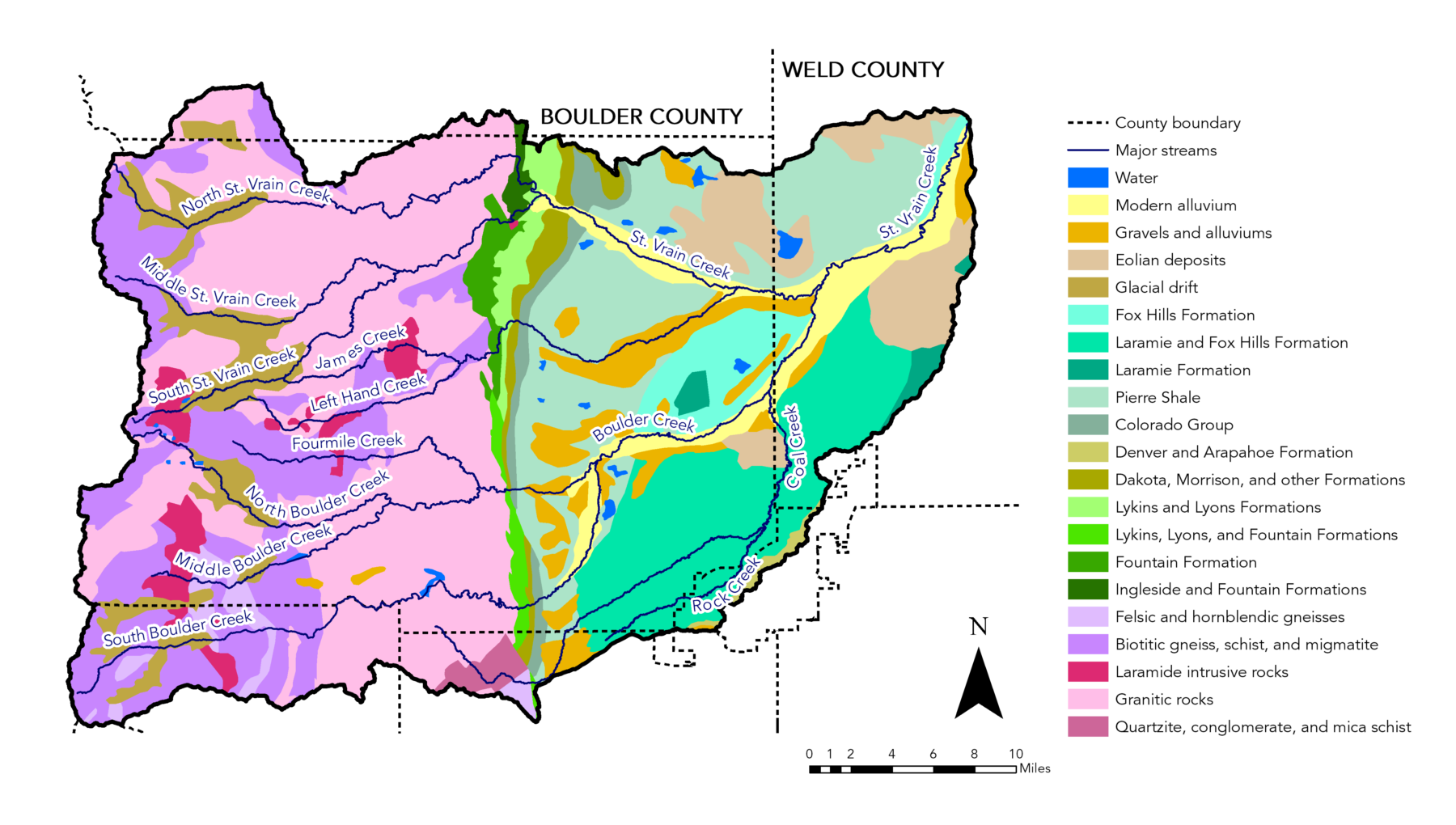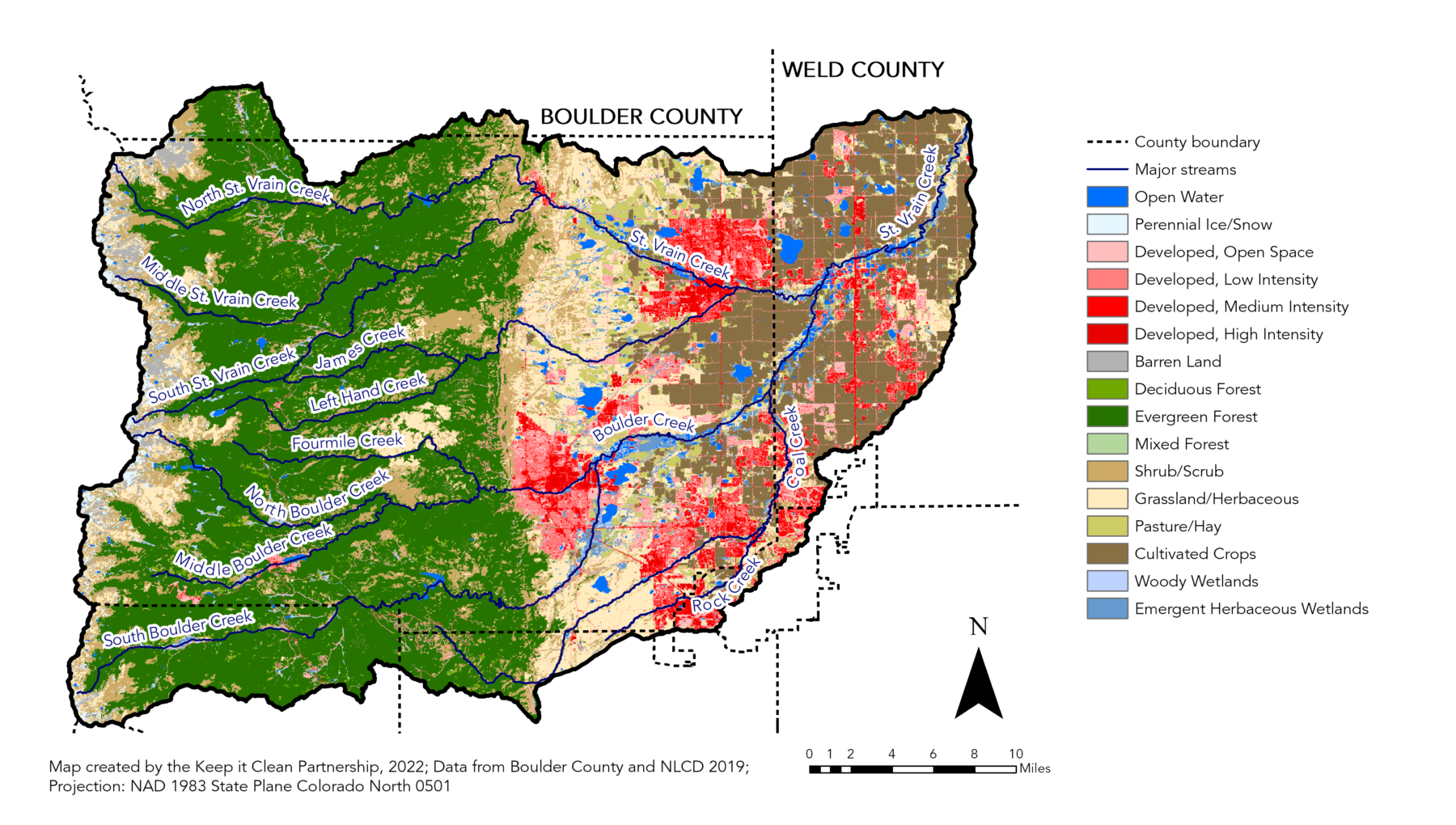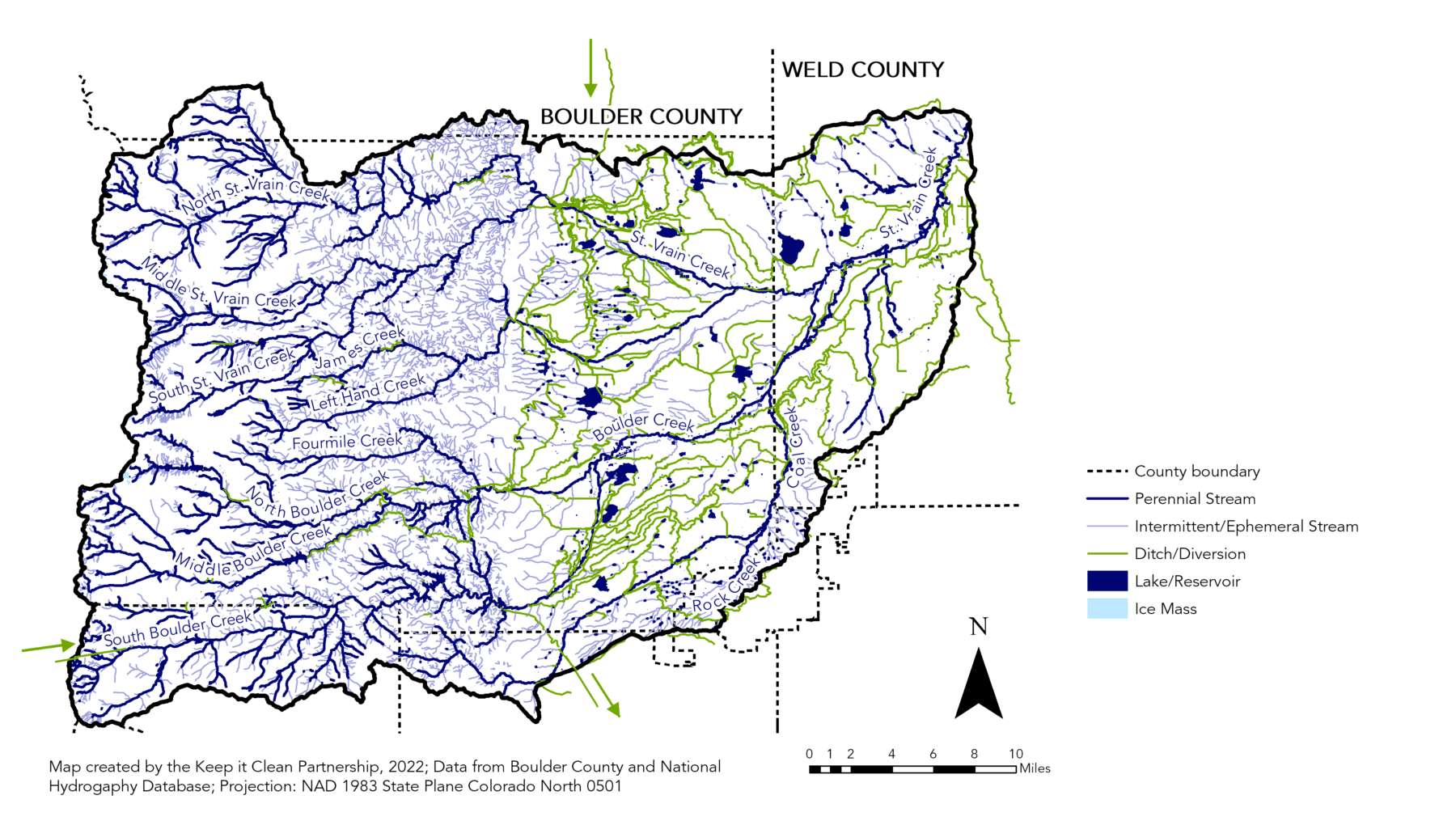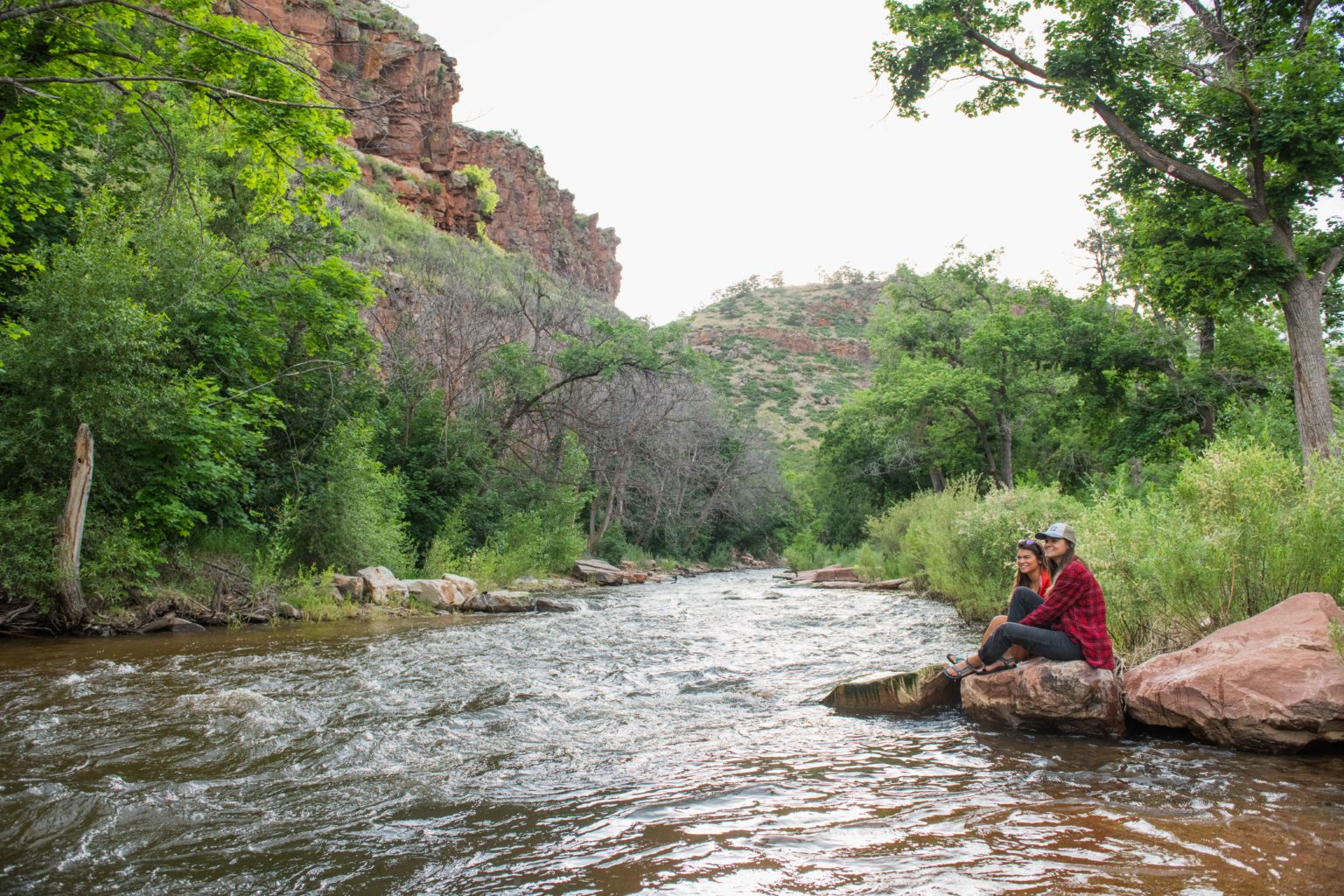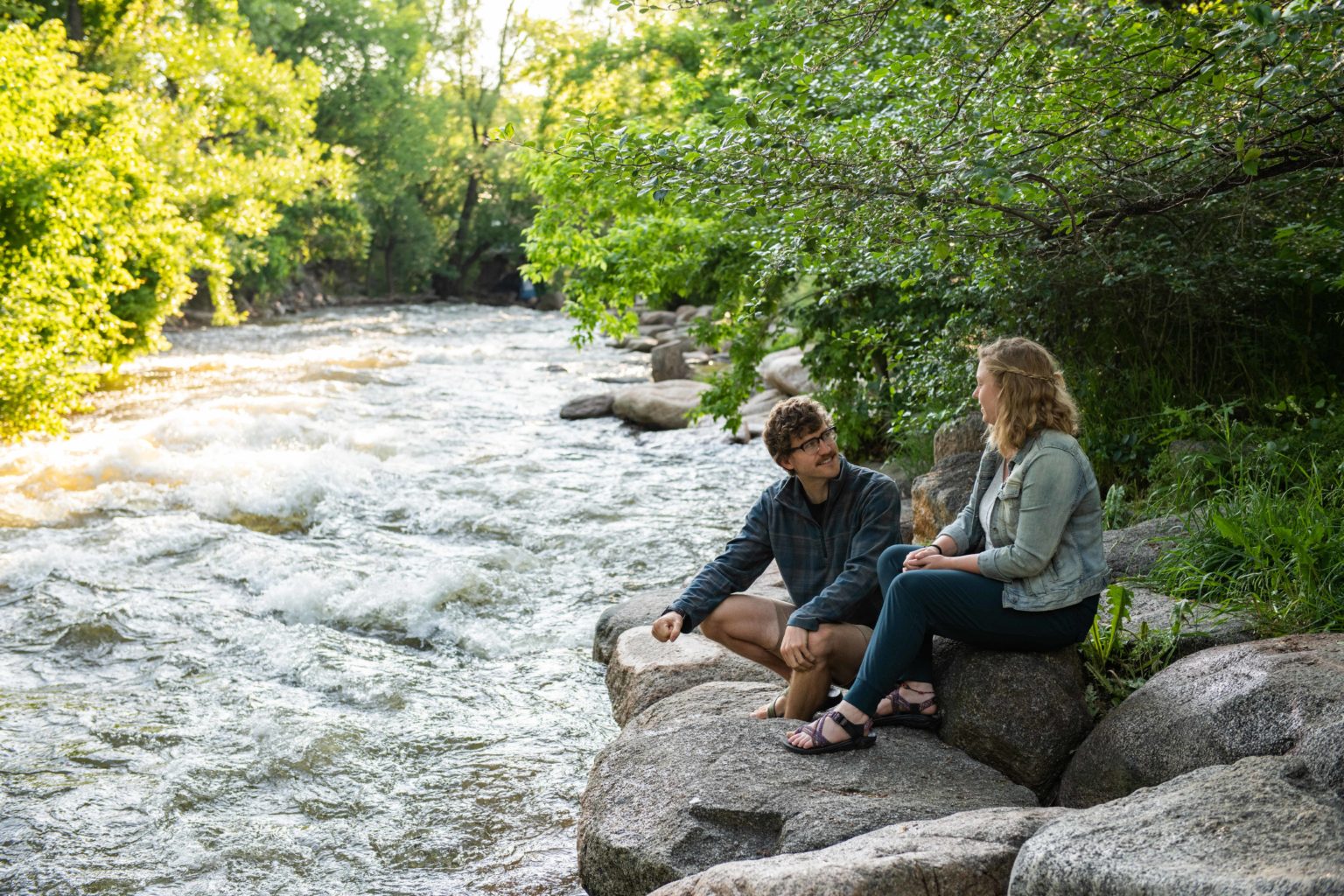Geology
The mountainous upper portions of the Boulder St. Vrain watershed are primarily made up of granite and various metamorphic rocks over 1 billion years old. Meanwhile, the geology of the plains is primarily sedimentary rocks and deposits from river valleys that are much younger. Concentrations of various ions and metals reflect this transition. The hard rocks of the upper watershed do not weather as easily as the softer materials in the foothills and plains, and our streams naturally pick up some background concentrations of various metals as they move downstream. There are also deposits of various metals, such as gold, copper, and silver, in the upper watershed. Even if mining operations have ceased, old mines can leak heavy metals into our streams that are harmful to aquatic life.
Land Cover
The upper portions of the watershed are largely evergreen forest, with barren land and perennial ice near the Continental Divide and some areas of shrub interspersed throughout. In the lower foothills and plains this transitions to grassland, pasture, and cultivated crops and several large urbanized areas. There are areas of open water and various wetlands along Boulder Creek and St. Vrain Creek. Agricultural areas can contribute nutrients and bacteria to streams, and large urbanized areas contribute significant pollution in the form of stormwater runoff that contains various chemicals, nutrients, bacteria, and other pollutants. As land cover changes moving downstream we see concentrations of many pollutants increase from the background levels in their undeveloped headwaters.
Hydrology
Most of the water in our streams starts as snowmelt high in the mountains, which means there are some major seasonal trends in streamflow that affect water quality. Flows are generally highest in early summer when snow is melting and at their lowest during the fall before snow has accumulated. Higher flows can dilute certain pollutants, but they can also pick up additional pollutants through stormwater runoff, and it is important to consider stream flow and recent precipitation events when evaluating water quality. Our watershed also has many diversions that move water across watershed boundaries and distribute it for use. As a result, some streams may decrease in flow as you move downstream and the water at any given point may have taken some detours before arriving there.
